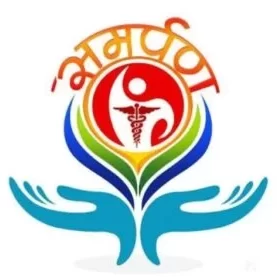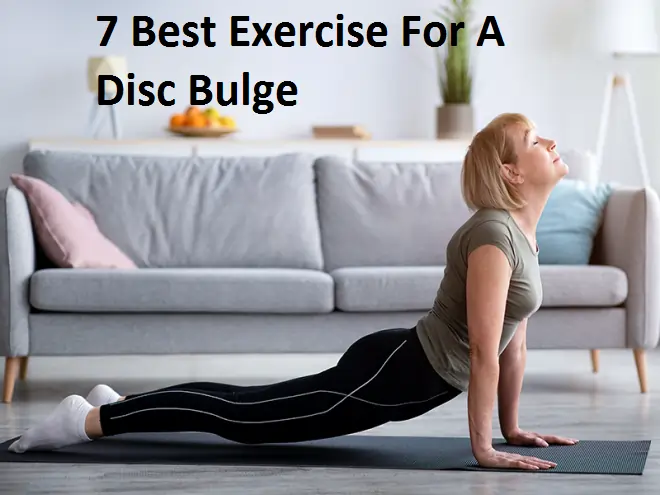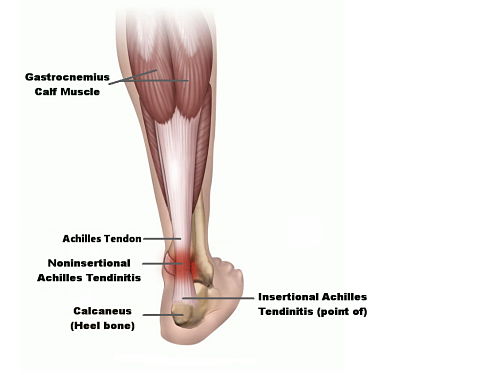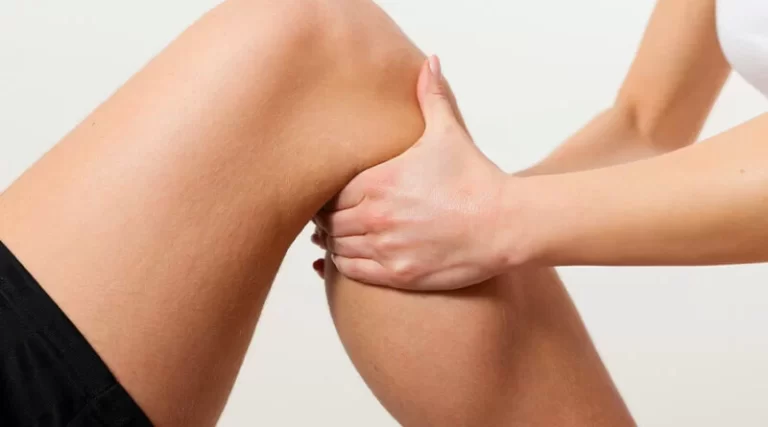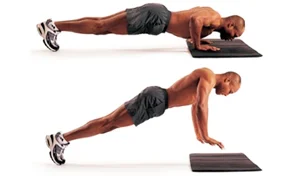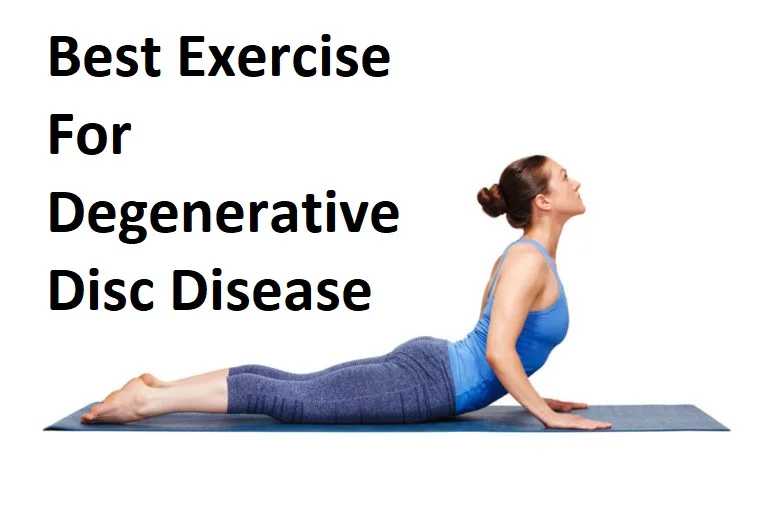7 Best Exercise For A Disc Bulge
Exercises for a disc bulge focus on relieving pain, improving mobility, and strengthening the core and back muscles.
Table of Contents
Overview
The intervertebral discs give the spine flexibility and shock absorption by serving as cushions between the vertebrae. Especially in the neck (cervical spine) or lower back (lumbar spine), a bulging disc may push on surrounding nerves, causing pain, numbness, tingling, or weakening. When a portion of the soft jelly in the disc’s center slides out past its stiff outer layer, it results in a disk bulge or ruptured disc.
Approximately 80% of people will have back discomfort at some point in their lives. In the UK, disc bulges or herniations are often the underlying cause of low back pain, which makes up 11% of all disabilities. With a 2:1 male-to-female ratio, disc bulges are most common in those between the ages of 30 and 50. 95% of disc bulges in individuals between the ages of 25 and 55 occur at the lower levels of the lumbar spine; disc bulges from the mid to upper lumbar spine are more common in those over 55.
Discs: What Are They?
The cushions in between each vertebral bone of the spine are called discs. The twenty-five discs operate as shock absorbers, protecting the vertebrae. They also permit mobility and aid in spine support. The disc’s three primary components are the cartilage-based endplates, the tough outer annulus fibrosus, and the inner nucleus pulposus.
- The discs are placed relatively near the spinal cord and nerve roots.
- The vertebrae enclose the spinal cord.
After splitting off from the spinal cord, the nerve roots travel to different areas of the body via openings in the vertebrae.
What is a disc bulge?
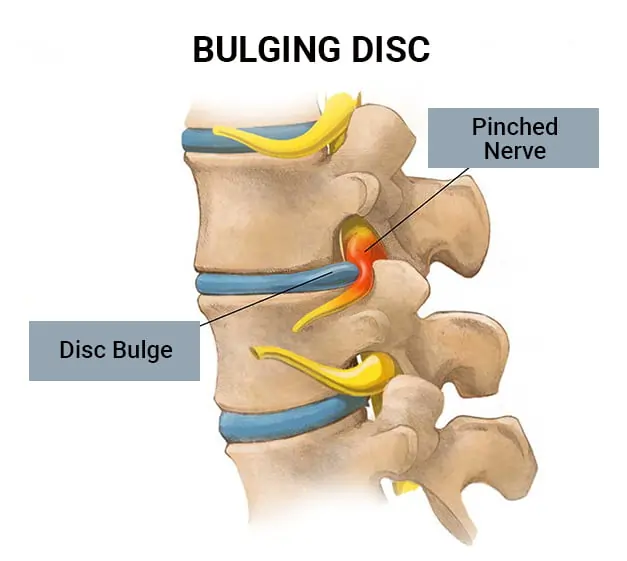
When one of the discs is not in its normal position, it is known as a herniated disc, bulging disc, or compressed disc. In particular, the annulus fibrosis, the outer part, is pushed against by the nucleus pulposus, the inner component. Nerve roots and the spinal cord may be impacted when this occurs. Disk degeneration, another name for the ailment, is frequently the result of normal, age-related wear and strain. Back injuries or accidents can cause herniated discs. Disc herniation can also be caused by minor injuries or simple movements.
Although disc herniation can happen anywhere along the spine, it most frequently occurs in the lower back (lumbar spine) and neck (cervical spine).
What is disc bulge exercise?
A disc bulging exercise is a particular stretch or action intended to increase the range of motion, reduce pain, and fortify the muscles that support the spine. By lowering the strain on the protruding disc, these activities aid in its healing and guard against future damage.
A particular stretch or movement called a disc bulge exercise is intended to assist control and alleviating the symptoms brought on by a protruding spinal disc. When the soft inner portion of a spinal disc pushes outward while staying inside its outer layer, it can cause a disc bulge, which can exert pressure on surrounding nerves and result in pain, stiffness, numbness, or weakness.
Age, bad posture, excessive lifting, repetitive strain, and spinal trauma can all lead to disc bulges. Many cases have no symptoms, but some might be uncomfortable and interfere with day-to-day activities. The bulge’s size, position, and whether or not it compresses any nerves determine how severe the symptoms are.
Conservative approaches like physical therapy, medicine, and lifestyle modifications are available for treatment, as are more sophisticated procedures such as epidural steroid injections or, in extreme situations, surgery. People can effectively manage a disc bulge and avoid more difficulties by being aware of its causes, symptoms, and available treatments.
What causes a bulging disc?
A bulging disc can develop as a result of several factors:
- Age-related wear and tear: Our intervertebral discs naturally get less supple and hydrated as we age, which increases their vulnerability to tearing and bulging.
- Trauma or sudden injury: A disc may bulge as a result of a sudden twist, lift, or impact on the spine; this is frequently observed in sports injuries and accidents.
- Repetitive strain: Lifting, twisting, and bending are not detrimental to your back, despite what many people think. Indeed, exercise is good for you! However, repeatedly performing difficult or unnatural motions might occasionally cause problems for some people.
- Hereditary: Some individuals may be more prone to bulging due to a hereditary predisposition toward weaker discs.
- Obesity: Carrying too much weight strains the discs and spine, particularly in the lower back.
What are the Disc bulge Risk Factors?
Among the risk factors are:
- Age: People in their 30s to 50s are most likely to experience back discomfort due to herniated discs.
- Sex: compared to women, men are twice as likely.
- Smoking
- hefty lifting
Goals of Disc Bulge Exercises:
- Disc bulge exercises are intended to relieve pressure on the afflicted disc and surrounding nerves.
- To improve the support of your spine, strengthen your back and core muscles.
- Increase your flexibility to regain movement and lessen stiffness.
- Promote circulation to the affected area to aid in healing.
Exercises advantageous:
Advantages of exercising when having a disc bulge:
- Less pain: Exercises that strengthen the core muscles will relieve pressure on the protruding disc, which will lessen pain and discomfort.
- Increased stability of the spine: By strengthening the surrounding muscles, the spine becomes more stable and the disc is less irritated.
- Improved spinal flexibility can lead to greater movement and less stiffness. This can be achieved with gentle stretches and targeted exercises.
- Improved blood circulation: Exercise increases blood flow to the injured area, which can lessen inflammation and aid in recovery.
- Better functional ability: Daily tasks can be carried out with less strain if the back muscles are strengthened.
Symptoms of a disc bulge/herniation:
- Low Back Pain
- Leg Numbness or Tingling
- Leg Pain
- Weakness in the Legs
- Loss of Bowel or Bladder control (It is necessary to receive rare and immediate medical treatment.)
What signs of a bulging disc are present?
The location, intensity, and presence or absence of nerve compression all affect the symptoms of a bulging or herniated disc. These are a few typical symptoms and indicators:
- Back pain: This is the most prevalent symptom and can be moderate or severe. Certain positions or movements may exacerbate the discomfort, which may remain in the affected location or spread to other body parts like the arms or legs.
- Numbness or tingling: The locations where the nerve service may experience numbness or tingling if the protruding disc compresses adjacent nerves.
- Muscle weakness: It may be difficult to move or lift objects if you have muscle weakness due to nerve compression.
- Restricted range of motion: It may be difficult to bend, twist, or move normally due to pain and stiffness.
- Reflex alterations: In certain situations, a bulging disc may impair nerve function, resulting in reflex abnormalities.
4 Stages of Disc Bulge:
- Disc protrusion
- Prolapsed Disc
- Disc Extrusion
- Sequestered Disc
How is exercising helpful?
The two most crucial aspects of recovering from a herniated disc are frequent exercise and physical therapy (osteopaths/physiotherapy).
The muscles that support the spine will become stronger with milder exercises and activities, which will also lessen the strain on the spinal column. Additionally, they will increase the spine’s flexibility and may lower the chance of a herniated disc recurring.
The following mild exercises can be beneficial:
- Pilates
- Yoga
- Swimming
- Walking
- Cycling
Every exercise should be done slowly and deliberately, particularly while lifting or bending. A person should cease performing the exercises and consult their osteopathic physician if they experience any pain.
What Is the Duration of the Pain?
After a flare-up, the majority of patients with a lumbar disc bulge or herniation will progressively get better over a few days to weeks, and most will be symptom-free in three to four months.
When starting an exercise regimen, take into consideration the following safety precautions:
For maximum benefits, certain steps can be taken before beginning any type of exercise program. To determine which exercises are most effective for your specific problem, speak with your physician or physical therapist.
It’s critical to pay attention to your body and refrain from injuring yourself when you’re in pain. Even while soreness is a common side effect of exercise, prolonged or severe discomfort may be a sign of overworking.
Recurring injuries can be avoided by maintaining an appropriate stance and technique. Consider speaking with a doctor if you’re unsure how to carry out a fitness regimen. Warming up beforehand will help your muscles and joints be ready for exercise.
Physical therapy’s function in treating bulging discs
Physical therapy frequently serves as the cornerstone of non-surgical intervention for the treatment and management of bulging discs. Experts in physical therapy employ their knowledge and cutting-edge methods to assist patients become more mobile, more flexible, and less in pain. Restoring normal movement and offering prompt symptom relief are the objectives.
Mechanical traction is a useful physical therapy technique that helps persons with lumbar back pain with their everyday activities and relieves lower back and leg discomfort. Its therapeutic efficacy is frequently superior to that of traditional physical therapy alone, even if it might not have a major impact on spinal motion. For best effects, lumbar traction can be used in conjunction with other conventional physical treatment techniques.
Can physical therapy help cure a bulging disc?
When people with bulging discs inquire if physical therapy can heal them, the majority of them say that it can. In actuality, the body can repair itself if we give it enough time, a nutritious diet, and the kind of mild exercise it requires.
Even if a bulge might not completely retract, symptoms might be lessened and additional treatment is not necessary by releasing the strain on the surrounding nerves.
Recuperation and symptom management can be greatly aided by physical therapy. Regular, focused physical therapy can often help the body heal and adapt, reducing or even eliminating the need for surgery.
7 Best Exercises for Disc Bulges (Prevention and Rehabilitation)
Avoid high-impact exercises and excessive spinal flexion or twisting. Gradually progress based on comfort and symptoms.
Cobra Stretch
The Cobra Stretch, also called Bhujangasana in yoga, is a backbend pose that helps strengthen the back muscles, open up the chest, and increase spinal flexibility. It is frequently used to relieve lower back strain in physical therapy, yoga, and stretching exercises.
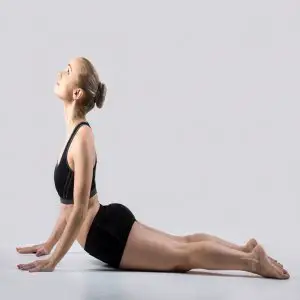
The Cobra Stretch
How to Perform the Cobra Stretch:
- Start Position: Place your hands beneath your shoulders and extend your legs straight behind you while lying face down on the floor.
- Activate Your Core: Squeeze your glutes a little while pressing the tops of your feet into the ground.
- Elevate Your Chest: To raise your upper body off the ground, push through your hands and extend your arms. If necessary, keep your elbows slightly bent.
- Shoulders Down: Try to expand your chest and keep your shoulders away from your ears.
- Hold the Position: Take deep breaths while remaining in the stretch for 15 to 30 seconds.
- Lower Back Down: Return your chest to the floor slowly
Straight Leg Raise Exercise
Strengthening the quadriceps, hip flexors, and core muscles is possible with the Straight Leg Raise (SLR), a simple yet effective exercise that is frequently suggested for people recuperating from knee problems, undergoing post-surgery rehabilitation, or seeking to increase lower-body strength.
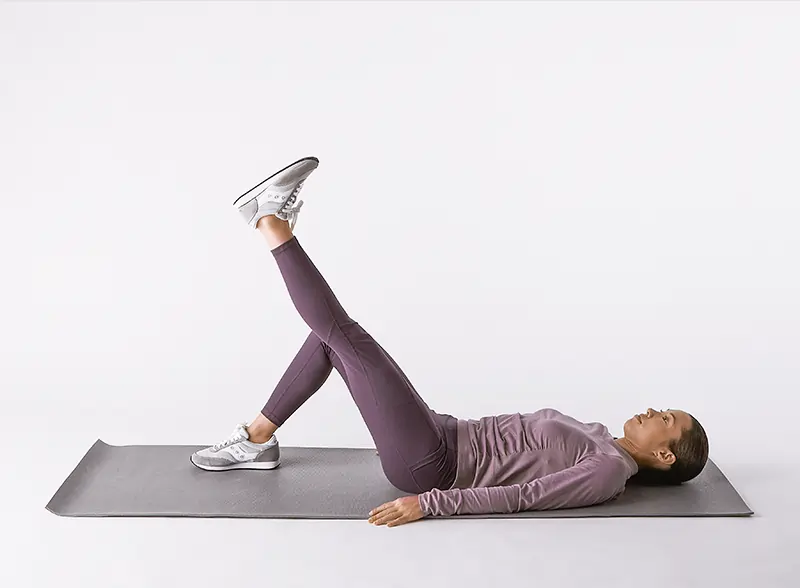
How to Do
- While lying on your back, place one leg flat on the floor and the other bent at the knee, keeping your foot flat.
- When you raise your straight leg toward the ceiling, make sure it remains straight.
- After holding for a short while, let your leg drop back to the ground.
Benefits
- Increasing hip flexor strength will increase hip stability and mobility.
- Stability and core strength can help you manage your back discomfort and avoid flare-ups in the future.
- Increase hip flexibility and range of motion
- Enhance stability around the hip joint and strengthen weaker muscles to prevent knee and hip problems.
Superman Exercise
A fantastic bodyweight exercise that improves posture and spinal stability, the Superman Exercise works the lower back, glutes, hamstrings, and core.
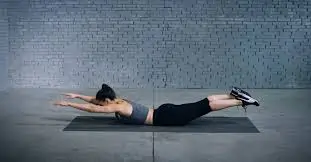
How to do
- Place your arms out in front of you and your legs straight while you lie on the floor in a prone (facedown) position.
- Slowly raise your arms and legs about 6 inches (15.3 cm) off the floor, or until you feel your lower back muscles contracting, while maintaining a neutral head position (don’t look up). At the same time, contract the muscles between your shoulder blades, your core, and your glutes.
- To contract your abs, try to raise your belly button just a little bit off the ground. You can visualize this by visualizing yourself as Superman soaring over the skies.
- Maintain this posture for two to three seconds. Throughout, make sure you’re breathing.
Benefits
- Increases the hamstrings, glutes, and lower back.
- enhances spinal stability and posture
- increases stamina and core strength
- lowers the chance of lower back pain
Knee to Chest Exercise
The Knee-to-Chest Exercise is a straightforward yet powerful stretch that works the core and the lower back, hips, and glutes. It facilitates increased mobility, lower back tension relief, and flexibility.
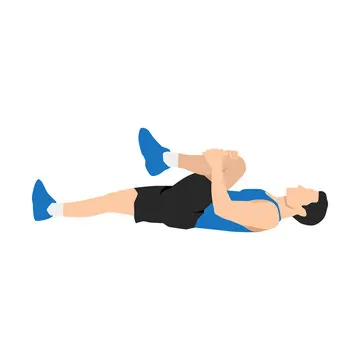
How to do
- As you lie on your back, place both of your legs flat on the floor and bow your knees. We refer to this as the supine position.
- Gently bring one bent knee high enough so you can grip your lower leg with both hands. Interlace your fingers slightly under the knee.
- When performing the two-legged variant, raise one leg first, followed by the other. Starting with one and swiftly moving on to the other is probably safer because doing both at once requires a lot of abdominal muscle, especially for weaker backs.
- If you are taking both up at the same time, clasp your wrists or interlace your fingers between your lower legs, just below your knees, just like in the single-legged variation.
- Using your hands, gently draw your bent knee or knees toward your trunk.
- As much as you can, attempt to relax your lower back, pelvis, and legs while you’re tugging. When performed passively, the knees-to-chest exercise more effectively engages the lower back muscles.
- Hold for a few seconds.
- Put your leg back on the ground.
- Continue on the opposite side.
Benefits
- Reduces strain and lower back pain
- Stretches the muscles in the lower back, hips, and glutes.
- Increases mobility and flexibility
- Aids with posture and spinal alignment
- Lessons stiffness following extended sitting
Cat-Cow (Camel) Stretch
A mild spine mobility exercise that increases flexibility reduces tension, and encourages good posture is the Cat-Cow Stretch, also known as the Cat-Camel Stretch. It is frequently utilized in warm-ups, yoga, and physical rehabilitation.
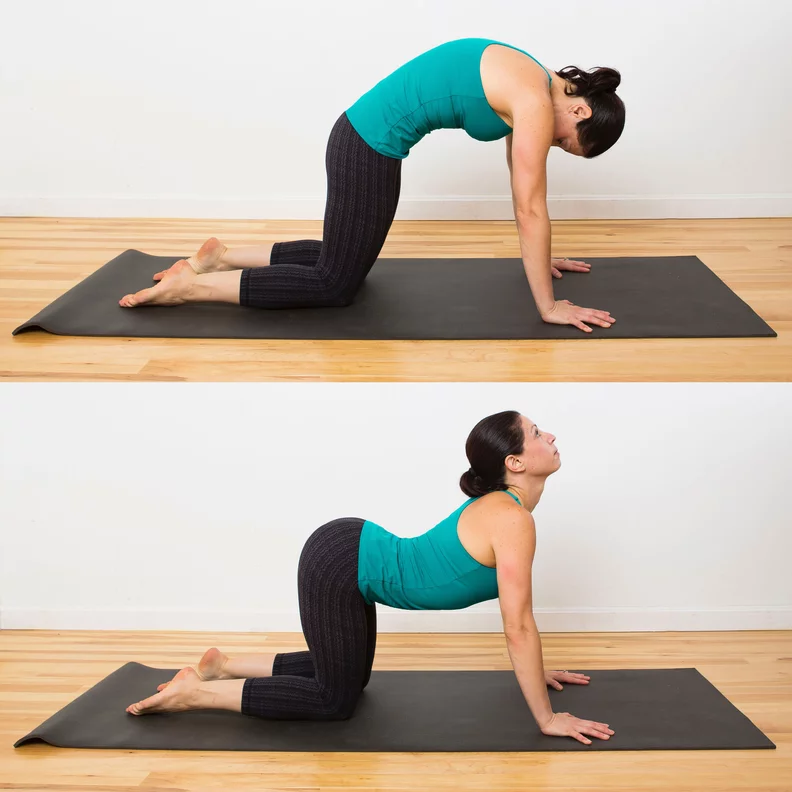
How to Perform the Cat-Cow Stretch:
- Place Yourself on a Tabletop
- Put your knees beneath your hips and your hands directly beneath your shoulders.
- Keep your spine normal and contract your core.
Flexion in Cat Pose
- Tuck your chin into your chest, round your back, and exhale.
- Spread your shoulder blades apart by pushing through your hands.
- Slightly tuck your pelvis.
Pose of the Cow (Extension)
- Take a deep breath and raise your chest and tailbone by arching your back.
- Look up a little and pull your shoulders away from your ears.
- Let your stomach fall to the ground.
Repetition
- Move fluidly between Cat and Cow, coordinating your breath with the motion.
- 8–10 repetitions, or as necessary, should be performed.
Advantages
- Enhances the spine’s flexibility and range of motion.
- Relieves shoulder, back, and neck strain, and promotes improved posture.
- Strengthens and uses the core muscles.
- Encourages rest and relieves tension
Bird Dog Stretch
A wonderful exercise for enhancing balance, coordination, and core stability is the Bird Dog Stretch. In addition to working the shoulders, it mainly works the lower back, abs, and glutes.
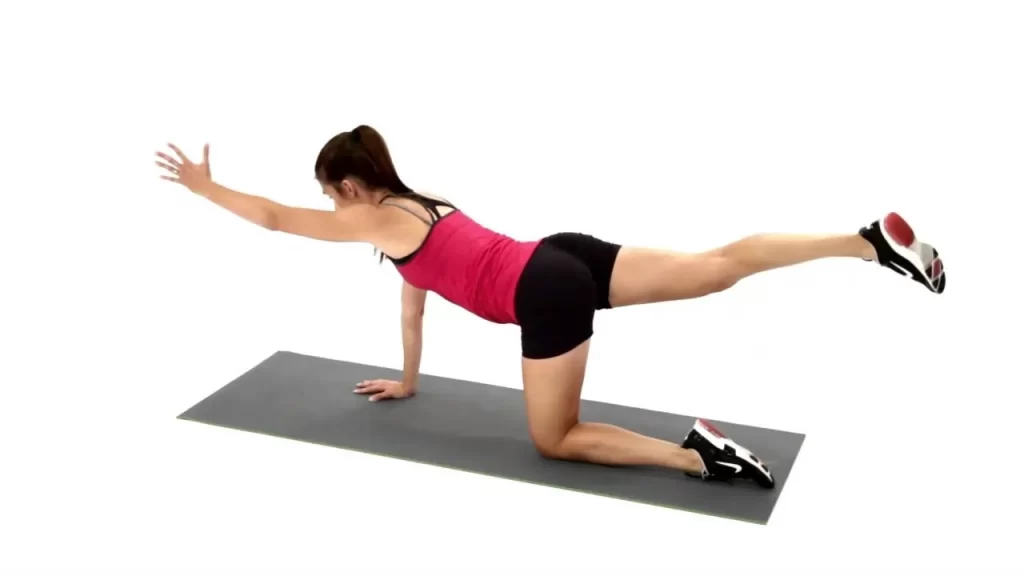
How to do:
- Start on your hands and knees, placing your knee between your hips and your hands beneath your shoulders.
- Kick your right leg backward until it is in line with your body while simultaneously raising your left arm and reaching it forward until it is in line with your torso.
- Return gradually to the starting position after holding this position for two to three seconds.
- Do the same with the other hand and the other leg.
- Do 10 reps on the opposite side for two to three sets.
- Make certain that your head, neck, and back are in an equal position to lessen neck discomfort.
Benefits of the Bird Dog Stretch:
- Enhances balance and core stability
- and strengthens the glutes and lower back.
- Promotes better spinal alignment and posture
- Prevents lower back discomfort
Piriformis Stretch
The piriformis stretch is an excellent way to release piriformis muscle tightness, which can be a contributing factor to hip or sciatica discomfort.
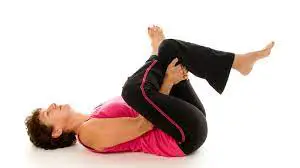
How to do:
- Lay on your side with your knees extended and your feet straight on the floor.
- Over your left knee, cross your right ankle.
- Pull your left thigh toward your chest by grabbing it behind it.
- Change sides after 20 to 30 seconds of resting.
The Best 7 Exercises for Disc Bulge Relief
The following Exercises should be avoided:
- lifting weights and squats
- Sit-Ups and Crunches
- Toe Touches and Forward Bends
- Leg Presses
- Running and High-Impact Activities
- Deadlifts
- Standing hamstring stretches
- Squats
Summary
The pain and pressure associated with a herniated or slipped disk might be reduced by performing mild stretches and exercises. To reduce pressure on the spinal column and avoid pain and recurrence, strengthen your hamstrings and back.
Always consult a physician before doing any activities to make sure they won’t harm your back or result in further discomfort. Depending on where the herniated disk is located, a doctor might suggest the ideal workouts for each patient.
FAQs
What is a bulge in the disc?
When an intervertebral disc’s soft inner section extends outward, pressing against surrounding nerves, the result is a disc bulge. The afflicted part may become painful, stiff, numb, or weak as a result.
Can a bulging disc be healed by exercise?
Activities like walking, elliptical exercise, swimming, and riding a conventional or stationary bike are also helpful for bulging discs, as can core and back workouts, provided they are done properly.
What kinds of workouts are beneficial for a bulging disc?
Core Strengthening: Exercises that stabilize the spine include bird dogs, planks, and pelvic tilts.
Stretching: Cat-cow, piriformis, and hamstring stretches are gentle ways to release tension.
Low-Impact Activities: Cycling, walking, and swimming help preserve mobility without putting undue strain on the body.
Do protruding discs return to their natural size?
Nine out of ten persons with herniated disks recover on their own or with nonsurgical therapy. Your doctor might advise surgery if alternative therapies are unable to alleviate your problems. There are several surgical methods for releasing pressure on your nerves and spinal cord.
How can a disc bulge be treated naturally?
Exercise, food, and other lifestyle modifications can all be used as natural treatments for a bulging disc. The objective is to strengthen the supporting muscles and lessen the strain on the damaged disc.
Which exercises should be avoided?
Poor form and heavy lifting
Excessive bending or deep spinal twists
Activities with a high impact (jumping, running)
Exercises like crunches and sit-ups can strain the lower back.
How frequently should I perform these exercises?
Higher-intensity strengthening activities can be performed three to four times a week while stretching and strengthening exercises can usually be performed every day. But always heed the advice of a physical therapist.
When should I visit a therapist or doctor?
If exercise doesn’t alleviate the ache
If you have weakness, tingling, or numbness in your arms or legs
Seek quick assistance if you have trouble regulating your bowels or bladder.
Can a disc bulge be treated with yoga or pilates?
Yes, however, to prevent excessive spinal flexion, workouts should be reduced. Deep forward folds should be avoided, however, poses like the cobra, child’s pose, and mild spinal twists can be helpful.
How much time does it take to heal from a bulging disc?
While recovery times vary, moderate cases may get better in a few weeks with the right treatment and exercise, while more severe cases may take months. The key to therapy is consistency.
How can someone who has a bulging disk sleep?
You are less likely to pinch the nerve when you lie on your back since it maintains your spine in a neutral position. Place a small pillow or rolled-up towel beneath your lower back and knees for extra comfort. Another way to relieve pressure on the herniated disc is to elevate your legs and ankles with a wedge-shaped pillow.
Does a bulging disk benefit from heat?
The pain symptoms brought on by a cervical herniated disc muscular spasm can be managed with heat and ice. Generally speaking, apply ice for the first twenty-four hours following this injury, and then utilize whatever feels better. It’s acceptable for some folks to switch between using heat and ice or ice and heat.
Is walking beneficial for disc Bulge?
Walking can help with a herniated disc, but before beginning any fitness regimen, you should speak with your doctor. Walking is a low-impact exercise that helps improve muscle strength, circulation, and discomfort.
References
- Fensome, H. (2023, June 13). Lower Back Disc Bulges – The 8 Best Exercises to help you with your low back pain. Health First. https://www.healthfirstosteopathy.co.uk/post/2019/06/06/lower-back-disc-bulges-the-8-best-exercises
- Barrell, A. (2024, October 1). Safe exercises for a herniated disk. https://www.medicalnewstoday.com/articles/324311
- Spine, N. (2024, July 23). The right and wrong exercises for bulging discs. NJ Spine & Orthopedic. https://www.njspineandortho.com/the-right-and-wrong-exercises-for-individuals-with-a-bulging-disc/
- Bastia, S. (2024, September 6). Strengthening and Mobilizing: 7 Essential exercises for cervical disc bulge relief. Alleviate Pain Clinic. https://www.alleviatepainclinic.com/blog/strengthening-and-mobilizing-7-essential-exercises-for-cervical-disc-bulge-relief/
- Wang, Z., Liu, X., Gao, K., Tuo, H., Zhang, X., & Liu, W. (2024). Clinical effects and biological mechanisms of exercise on lumbar disc herniation. Frontiers in Physiology, 15, 1309663. https://doi.org/10.3389/fphys.2024.1309663
- Herniated disc pain? 5 key exercises to help. (n.d.). https://www.goodpath.com/learn/exercises-herniated-disc
